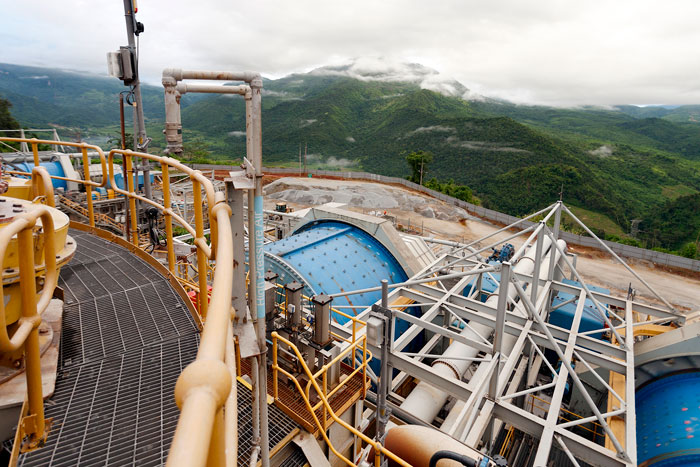Techno-economic evaluation of bulk ore sorting for copper ore at the PanAust Phu Kham Operation is a paper by Walter Valery, K. Duffy, P. Holtham, A. Reple, P. Walker, and P. Rosario that was presented at IMPC 2016: XXVIII International Mineral Processing Congress, Quebec City, Canada. This paper evaluates the technical and economic viability of bulk ore sorting for the PanAust Phu Kham copper deposit in Lao PDR. Bulk ore sorting technology is described briefly along with discussion of appropriate sensor and diversion systems for the Phu Kham operation.
To evaluate the economic implications, the actual mined material and costs from 2014 were used as the base-case. Sampling data was not available; therefore, the ore grade variability that would feed a bulk ore sorter was estimated using geo-statistical tools based on mine grade control data. The sorter performance when treating this material was simulated considering the accuracy of the sensor measurement and errors associated with material diversion. The impact on inferred cash flow was estimated for several different scenarios considering the additional costs for sorter operation and reject handling.
The evaluation demonstrated that bulk ore sorting at Phu Kham has the potential to increase the amount of metal in product and/or reduce processing plant throughput (and costs) to improve the annual inferred cash flow for the conditions investigated. The sorter is the gatekeeper – only material above the cut-off grade (value-adding) reports to the processing plant; no waste dilutes the feed. Likewise, above cut-off grade material is not lost to waste; preventing lost revenue.
The authors conclude that “economic evaluation demonstrated that bulk ore sorting at Phu Kham has the potential to increase the amount of metal in product and/or reduce processing plant throughput (and costs) to improve the annual inferred cash flow for the conditions investigated. With no mining or crushing limitations the annual metal production may be increased by 30 to 40% and inferred cash flow by 50 to 60%; however this would require a significant increase in mining rate and primary crusher throughput which is not currently viable at Phu Kham. With the current operational constraints bulk ore sorting would deliver little change in the annual metal production; however, cash flow may be increased by about 5% due to a reduction in processing plant throughput and operating costs. When the operation becomes SAG mill limited (rather than primary crusher limited) later in the mine life, the annual metal production may be increased by about 10 to 15% and inferred cash flow by more than 20%. In this case, the production can be increased because barren material is rejected by the sorter prior to the bottleneck.
“As most ore deposits are heterogeneous, it is expected that in many cases there would be sufficient grade variation to make upgrading by bulk ore sorting possible if implemented early in the process. Certainly for Phu Kham, where the geology is complex and highly heterogeneous, geostatistical analysis has indicated that bulk ore sorting should provide sufficient upgrade to be economically viable.”











